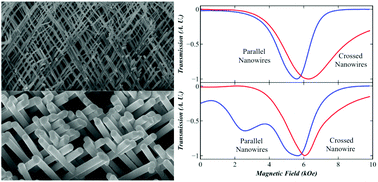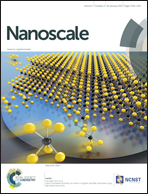Artificially modified magnetic anisotropy in interconnected nanowire networks
Abstract
Interconnected or crossed magnetic nanowire networks have been fabricated by electrodeposition into a polycarbonate template with crossed cylindrical nanopores oriented ±30° with respect to the surface normal. Tailor-made nanoporous polymer membranes have been designed by performing a double energetic heavy ion irradiation with fixed incidence angles. The Ni and Ni/NiFe nanowire networks have been characterized by magnetometry as well as ferromagnetic resonance and compared with parallel nanowire arrays of the same diameter and density. The most interesting feature of these nanostructured materials is a significant reduction of the magnetic anisotropy when the external field is applied perpendicular and parallel to the plane of the sample. This effect is attributed to the relative orientation of the nanowire axes with the applied field. Moreover, the microwave transmission spectra of these nanowire networks display an asymmetric linewidth broadening, which may be interesting for the development of low-pass filters. Nanoporous templates made of well-defined nanochannel network constitute an interesting approach to fabricate materials with controlled anisotropy and microwave absorption properties that can be easily modified by adjusting the relative orientation of the nanochannels, pore sizes and material composition along the length of the nanowire.


 Please wait while we load your content...
Please wait while we load your content...